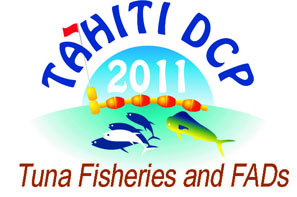Overview of exploitation and ecology of pelagic fish associated with offshore drifting and anchored FADs in the WCPO
1 : Secretariat of the Pacific Community
(SPC)
B.P. D.5. 98848 Noumea Cedex New Caledonia -
Nouvelle-Calédonie
2 : Secretariat of the Pacific Community
(SPC)
B.P. D.5. 98848 Noumea Cedex New Caledonia -
Nouvelle-Calédonie
3 : Secretariat of the Pacific Community
(SPC)
B.P. D.5. 98848 Noumea Cedex New Caledonia -
Nouvelle-Calédonie
4 : Secretariat of the Pacific Community
(SPC)
B.P. D.5. 98848 Noumea Cedex New Caledonia -
Nouvelle-Calédonie
5 : Secretariat of the Pacific Community
(SPC)
B.P. D.5. 98848 Noumea Cedex New Caledonia -
Nouvelle-Calédonie
6 : Secretariat of the Pacific Community
(SPC)
* : Corresponding author
B.P. D.5. 98848 Noumea Cedex New Caledonia -
Nouvelle-Calédonie
Tropical tuna, particularly at small and juvenile stages are known to associate with floating objects. In the Western and Central Pacific Ocean, which accounts for over half of world tuna production, purse seine effort and catch on floating objects has increased significantly due to a rapid increase in the use of fixed and free-floating fish aggregation devices (FADs). FADs have been shown to alter the behaviour and movement patterns of skipjack (Katsuwonus pelamis), yellowfin (Thunnus albacares) and bigeye (T. obesus). Aggregation to drifting objects, dramatically increases vulnerability to purse seine gear, particularly for juvenile and small size classes. Concern over floating object fishing effort on bigeye and to a lesser extent yellowfin stresses the need to understand the impacts of FADs. In this paper the purse-seine FAD fisheries of the Western and Central Pacific Ocean are characterised, including the provision of information on species composition, trophic interactions, movements of tuna and broader ecosystem impacts associations with FADs.

 PDF version
PDF version
